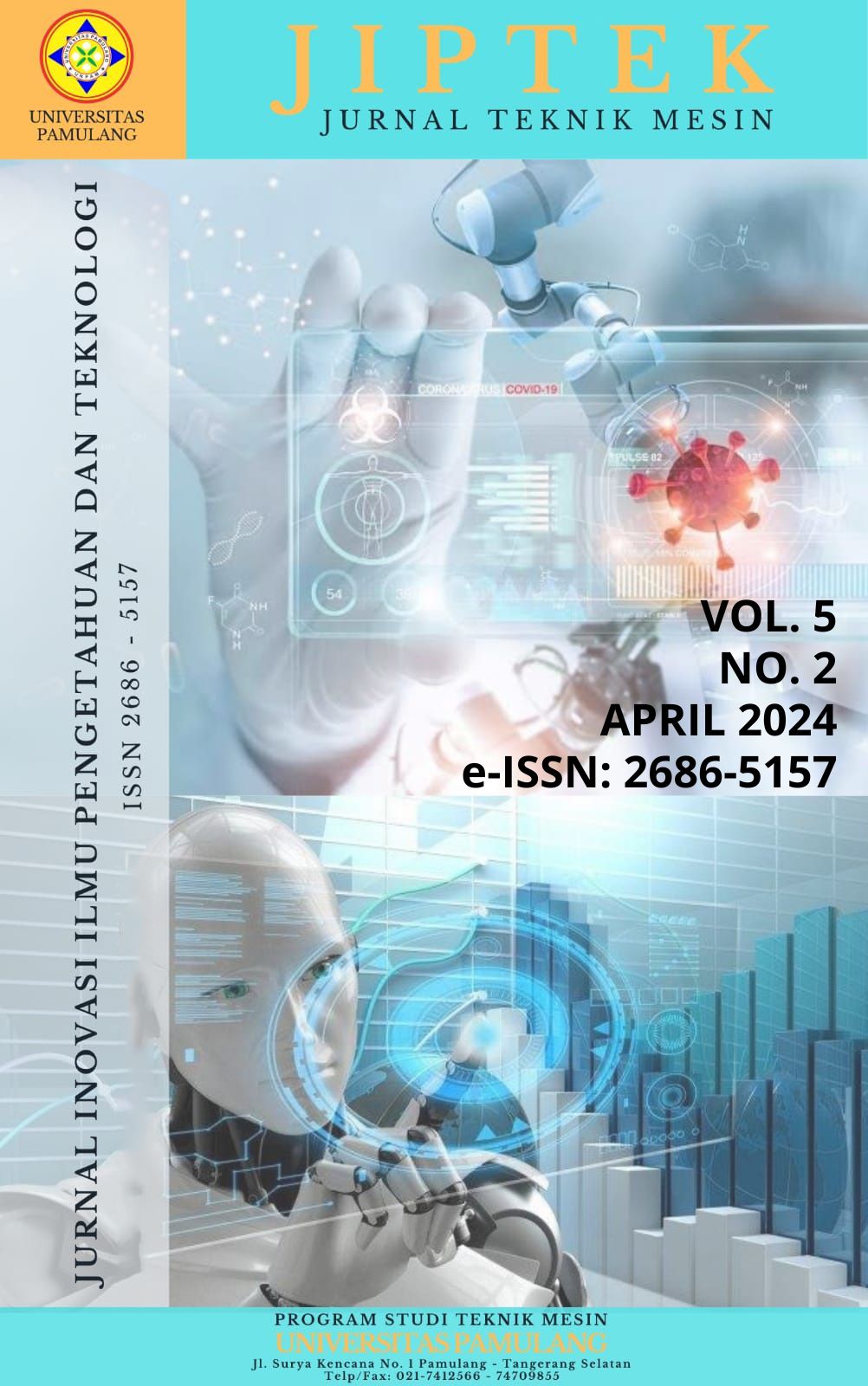Pengaruh Dolomite Terhadap Sifat Fisika dan Kimia Keramik
DOI:
https://doi.org/10.32493/JIPT.v5i2.39793Keywords:
Ceramics, Dolomite, Flexural Strength, Shrinkage, Compressive StrengthAbstract
The ceramic industry material has experienced rapid development. This development includes advancements in structure, composition, and physical and mechanical properties. One effort to enhance mechanical strength is by mixing ceramic materials with other materials available in the market. The quality of ceramics is a crucial factor to consider, one of which is by examining the physical and chemical properties of ceramics. Dolomite is one of the materials that significantly impacts ceramic formation; therefore, experiments need to be conducted to determine the extent of dolomite's influence on ceramic quality. Tests are carried out to ascertain the effect of dolomite amount on the characterization of ceramics. The characterization of ceramic samples with added dolomite in various amounts includes chemical and physical properties. The chemical properties of ceramic materials are determined through chemical analysis using X-Ray Fluorescence to identify the elements present in the ceramic materials. Physical properties can be determined by measuring shrinkage, compressive strength, and bending. The obtained chemical and physical properties can be used to determine the appropriate composition of dolomite as a ceramic material to achieve good ceramic quality. The correct material composition will produce ceramic products that are harder and stronger, making them less prone to breaking when heated. The chemical analysis results of dolomite using X-Ray Fluorescence show that the main elements are CaO and MgO with mass percentages of 69.41% and 29.37%, respectively. The more dolomite added to the ceramic raw material, the higher the content of CaO and MgO. The physical properties of ceramics with the addition of 2.50% dolomite in the ceramic material result in a dry shrinkage of 3.37%, firing shrinkage of 8.87%, compressive strength of 74.21 MPa, and bending of 22.76%.
References
[1] J. Lalu, “Artikel Bahan Galian Industri: Dolomit,” Makalah Ilmiah. Mataram: Program Studi Kimia Fakultas MIPA Universitas Mataram, pp. 7–10, 2010.
[2] Nuryanto, Pengetahuan Bahan Mentah Keramik. Bandung: Balai Besar Keramik, 2006.
[3] P. A. Tipler, Fisika Untuk Sains dan Teknik. Jakarta: Erlangga, 1998.
[4] A. Astuti, Pengetahuan Keramik. Yogyakarta: Gadjah Mada University Press, 1997.
[5] P. Sebayang, Muljadi, and A. Tetuko, “Pembuatan Bahan Filter Keramik Berpori Berbasis Zeolit Alam dan Arang Sekam Padi,” J. Teknol. Indones., vol. 32, no. 2, pp. 99–105, 2009.
[6] C. G. Mothé and M. C. R. Ambrósio, “Processes occurring during the sintering of porous ceramic materials by TG/DSC,” J. Therm. Anal. Calorim., vol. 87, pp. 819–822, 2007, doi: 10.1007/s10973-006-8196-8.
[7] A. P. Bayuseno, “Pengembangan dan Karakterisasi Material Keramik Untuk Dinding Bata Tahan Api Tungku Hoffman K1,” ROTASI, vol. 11, no. 4, pp. 5–10, 2009, doi: 10.14710/rotasi.11.4.5-10.
[8] X. Xu et al., “Effect of dolomite and spodumene on the performances of andalusite composite ceramics for solar heat transmission pipeline,” Ceram. Int., vol. 41, no. 9, Part B, pp. 11861–11869, 2015, doi: 10.1016/j.ceramint.2015.05.155.
[9] H. Kiswanto, “Optimasi Sifat-Sifat Mekanik Genteng Pres dengan Bahan Aditif Silika dan Dolomit,” Universitas Negeri Semarang, 2011.
[10] Purwanto, “Studi Sifat Bending dan Impact Komposit Serat Kenaf Acak-Polyester,” Unnes, Semarang, 2006.
Downloads
Published
How to Cite
Issue
Section
License
Copyright (c) 2024 Agustina Dyah Setyowati, Sulanjari, Ade Irawan

This work is licensed under a Creative Commons Attribution-NonCommercial 4.0 International License.









